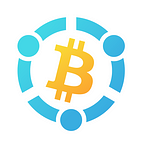ViaBTC Pool Unveils DCR: On-chain Co-governance under Hybrid Consensus
In the early days of Bitcoin’s development when the Bitcoin community received an increasing number of participants, views on the development and problems of Bitcoin began to diverge on Bitcointalk. As a result, Ethereum was created upon the proposal of Vitalik Buterin for a financial contract that runs on Bitcoin; the project of Monero (XMR), a privacy token, was initiated because some developers believed that there was a higher demand for privacy; and Decred (DCR) was put forward by Jake Yacom-Piatt, who published an article titled “Bitcoin’s biggest challenges”, discussing the problems of project governance, funding development and too much power of proof-of-work (PoW) miners, based on his observation that the development of Bitcoin could be suppressed by the PoW miners who have an enormous amount of influence.
Bitcoin follows the PoW consensus protocol. Under the sheer PoW consensus mechanism, network security is ensured because an attack costs much more than the benefit it generates. However, this method consumes a considerable amount of resources, and a concentration of hashrate can be expected. The proof-of-stake (PoS) mechanism used in ETH2.0, on the other hand, consumes less energy. But security can only be guaranteed when there are as many decentralized full nodes as needed to verify blocks.
Therefore, Decred combined the two consensus mechanisms (PoW & PoS) into a hybrid one to divide the nodes into two categories: mining nodes and validators. Mining nodes are responsible for packaging and PoW mining, while validators vote to verify the blocks submitted by miners through the PoS mechanism and participate in governance.
DCR, Decred’s native token, can only be generated through block rewards. The rewards of the Genesis Block are the pre-mined 1,680,000 DCR. Originally, block rewards are set to 31.19582664 DCR, but this will reduce by a factor of 100/101 every 6,144 blocks. It is expected that all DCR, about 21 million, will all be mined by 2120. Decred’s block rewards are divided into three parts: 60% of the block rewards go to PoW miners, 30% to PoS validators and the remaining 10% are sent to the Decred on-chain treasury.
Through the hybrid consensus mechanism of PoW and PoS, Decred created an effective balance among users, developers, miners, and stakeholders. In this way, it reduces the possibility of attacks launched by miners with great hashrates, while stakeholders, who need to rely on block generation to obtain rewards, will not do evil for no reason, thus ensuring the mutual restriction between miners and stakeholders. So the co-existence and mutual benefit between the two parties are ensured for successful block generation.
Meanwhile, the PoW+PoS hybrid consensus mechanism avoids the lack of market liquidity that can occur under the sheer PoS mechanism which locks too much DCR. The mining revenue in the hands of miners can flow to the market freely in exchange for operating funds, thereby ensuring the liquidity of DCR. The PoS lock-up mechanism can also help maintain the stability of the prices in the secondary market and ensure the benefits of multiple parties.
Decred appeared to build a decentralized, sustainable and community-made cryptocurrency system. Its mining algorithm has also been adjusted based on that of Bitcoin. It uses the more secure Blake256r14 algorithm, through which miners can mine with ASIC mining machines, such as Shenma D1, Ant DR3, DR5, Xingdong T9+, Stronix U1, and U1++.
ViaBTC Pool, the world’s leading digital currency mining pool, has launched DCR, a cryptocurrency supporting three income distribution methods of PPS+, PPLNS, and SOLO. The default payout is 0.1 DCR, and the minimum payout is 0.01 DCR. In a month starting from July 26, all users can participate in the “Fee-free Mining Carnival”. Transaction fees will be restored after the event.
With the lowest rate of orphan blocks in the entire network, ViaBTC Pool has become the third-largest BTC mining pool and second-largest BCH mining pool in the world, serving more than 1 million users from 130 countries and regions. It also pioneered the PPS+ income distribution model, providing professional financial tools such as hedging and staking to ensure the security and stability of mining and provide higher returns for miners.
